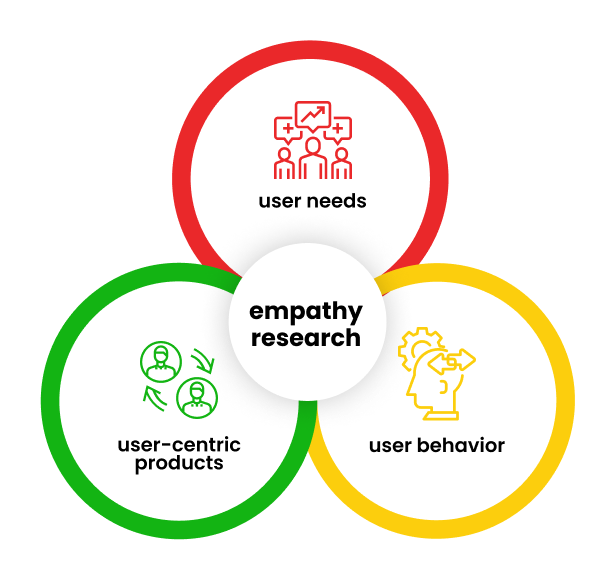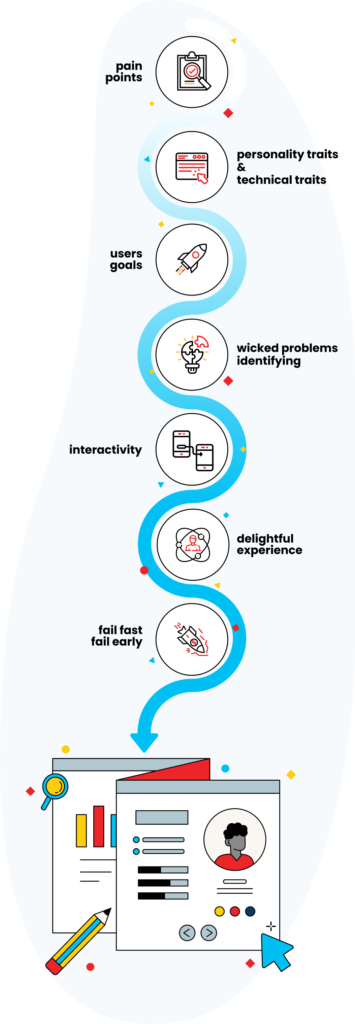Introduction
Empathy is at the core of user experience (UX) design, serving as a critical tool for understanding users’ needs, motivations, and behaviors. In the ever-evolving landscape of digital interfaces, creating products that truly resonate with users requires
a deep understanding of their experiences. This guide explores the various facets of empathy research in (UX) user experience projects, providing a comprehensive overview of methods, importance, and practical applications.
Play Video
What is Empathy?
Empathy, in the context of (UX) user experience design, refers to the ability to understand and share the feelings and experiences of users. It goes beyond surface-level observations and delves into the emotions, frustrations, and joys that users may encounter when interacting with a product or service.
In-Person Observation
One of the foundational methods for empathy research is in-person observation. This involves designers immersing themselves in the user’s environment to witness firsthand how they engage with a product. Observing users in their natural context provides valuable insights into their behaviors, preferences, and pain points.
Remote Observation
In scenarios where physical presence is challenging, remote observation becomes a viable option. Utilizing technology, designers can observe users in real-time through screen sharing or video calls, enabling them to gain a nuanced understanding of user interactions, even from a distance.
One-on-One Interviews
Conducting one-on-one interviews allows designers to dive deep into the individual experiences of users. This method facilitates open conversations, uncovering emotions and perspectives that may not emerge in group settings.
Focus Groups
In contrast, focus groups bring together a diverse set of users to discuss their experiences collectively. This method is valuable for identifying common patterns and gaining a broader understanding of user needs within a specific demographic.
Methods for Conducting Empathy Research
Various methods can be employed to conduct empathy research, each offering unique insights into user experiences. From online surveys and interviews to focus groups and paper surveys, designers have a range of tools at their disposal.
Why is Empathy Important in (UX) user experience Design?
Empathy is the cornerstone of effective (UX) user expereince design for several reasons. It allows designers to
- Understand User Needs
Empathy research helps in uncovering the genuine needs and desires of users, guiding the design process toward solutions that address real problems.
- Anticipate User Behavior
By empathizing with users, designers can predict how they might interact with a product, enabling the creation of intuitive and user-friendly interfaces.
- Build User-Centric Products
Designing with empathy ensures that products resonate with users on an emotional level, fostering a sense of connection and loyalty.

Online Surveys
Online surveys provide a scalable method for collecting data from a large user base. Carefully crafted survey questions can reveal quantitative insights into user preferences, opinions, and experiences.
Identifying Patterns and Themes
Analyzing collected data involves identifying patterns and themes that emerge across various research methods. Recognizing recurring elements helps in shaping a cohesive understanding of user experiences.
Surveys and Paper Surveys
Surveys, whether conducted online or on paper, remain powerful tools for gathering quantitative data. They are efficient for obtaining a broad perspective on user preferences and opinions.
How to Analyze and Synthesize Empathy Research Data
Once data is collected, the next crucial step is to analyze and synthesize it into actionable insights. This process involves creating empathy maps, developing personas, crafting user stories, and applying design thinking principles.
Creating Empathy Maps
Empathy maps visually represent user experiences by mapping out their thoughts, feelings, actions, and pain points. These visual aids provide a holistic view of user personas, aiding designers in understanding their motivations and needs.
Personas
Developing personas involves creating fictional characters that embody different user archetypes. Personas help in humanizing user data, making it easier for design teams to align their efforts with the diverse needs of their target audience.
Developing User Stories
Crafting user stories involves creating narratives that articulate the user’s journey with a product. These stories help designers empathize with users on a personal level, guiding decision-making throughout the design process.
Design Thinking
Empathy is a central tenet of the design thinking process, a human-centric approach to problem-solving. Design thinking encourages iterative ideation, prototyping, and testing, with a constant focus on understanding and addressing user needs.
Prototyping
Prototyping is an integral part of the design process, allowing designers to bring concepts to life for testing and validation. Prototypes, informed by empathy research, enable iterative design improvements based on user feedback.
Using Empathy Research in (UX) user experience Design
Empathy research findings are most impactful when integrated into the (UX) user experience design process. Usability testing and iterative design are key stages where empathy insights play a crucial role.
Usability Testing
Usability testing involves observing users interact with prototypes or existing products. Empathy research findings guide the creation of realistic scenarios, ensuring that usability tests authentically replicate user experiences.
Iterative Design
The iterative design process incorporates feedback from usability testing and ongoing empathy research. This cyclical approach allows designers to refine and enhance the user experience continually.

Conclusion
In the dynamic field of (UX) user exoerience design, empathy research stands as an essential tool for creating products that resonate with users on a deep and meaningful level. By understanding user needs, behaviors, and emotions, designers can craft experiences that go beyond functionality, fostering a strong connection between users and their digital interactions. This ultimate guide provides a comprehensive overview of empathy research methods, its importance in (UX) user experience design, and practical applications throughout the design process. As technology evolves, integrating empathy into the design process remains a timeless and indispensable practice for creating truly user-centric solutions.
